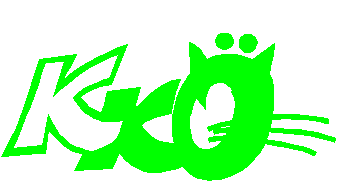|
Solid colours |
black |
| |
The coat colour is black like charcoal. |
| |
blue |
| |
The coat colour is a light blue-grey. |
| |
chocolate |
| |
The coat colour is like milk-chocolate. |
| |
lilac |
| |
The coat colour is like dove-grey with a slight pinkish
tone. |
| |
red |
| |
The coat colour is a deep orange, the darker the colour
is the better.
The coat should be without tabby markings. |
| |
cream |
| |
The coat colour is pale pastel cream. |
|
Tortie colours |
black tortie |
|
(also called tortieshell) |
The coat is patched in dark black and red. |
| |
blue tortie
(also called bluecream) |
| |
The coat is patched in light blue-grey and pastel cream. |
| |
chocolate tortie |
| |
The coat is patched in milk-chocolate and red. |
| |
lilac tortie |
| |
The coat is patched in dove-grey and pastel cream. |
|
Smoke colours |
All the colours above with silver, which means the at the
roots of the coat is a silver white band, with a silver white frill.
About 5/6 of the hair length is coloured with the above mentioned
colours. From outside the cat looks like a solid coloured cat, but when
the coat is parted or the cat moves the silver white underground can be
seen. |
|
Shaded and Shell |
All the colours above with silver, only the hair tips are
coloured with colour (called tipped with colour), the major part of the
hair length is silver white.
Cats without red have impressing green eyes. |
|
Shell is also called Chinchilla. |
Besides silver shaded/shell the same colours exist also
in Golden shaded and Golden shell, where the major part of the
hair length is coloured in a golden yellow tone.
Also here those cats without red have a striking green eye colour. |
| |
In some federations the cats in red silver, cream silver,
tortie silver are sometimes called Cameos, i.e. red Cameo, cream Cameo,
tortie Cameo. |
|
Tabby patterns |
There are 3 tabby patterns: |
| |
blotched (called 'classic tabby') |
| |
mackerel (called 'tigre') |
| |
spotted |
| |
All the colours above can have those tabby patterns:
f.e. black tabby, blue tabby, red tabby, tortie tabby (sometimes called
torbies), etc. |
| |
All the colours above together with silver can have those
tabby patterns:
f.e. black silver tabby, blue silver tabby, red silver tabby, tortie
silver tabby, etc., which means the base of the hairs is silver white
and on this silver white ground is the tabby pattern in black, in blue,
in red, etc. |
|
Bicolour patterns |
All the colours above can be with white. |
| |
There are different bicolour patterns: |
| |
Van
Almost the whole cat is white, there are only 2 colour patches on the
head and the tail is coloured. |
| |
Harlequin
The cat has coloured patches which are encircled with white.
The confusing thing is, that this pattern does not exist in all major
federations, and in some federations the Van is called Harlequin. |
| |
Bicolour, Tricolour
The cat has white in face, is white on the chest and stomach, has white
on the feet and paws, and sometimes it has a white collar and a white
patch on the back. The rest of the coat is coloured.
If the cat is tortie with white it is sometimes called tricolour, and in
some federations it is called Calico, respective Diluted Calico, when it
is f.e. a bluetortie with white. |
| |
Those bicolour patterns can be also tabby with white, can
be also silver with white (smoke with white, silver tabby with white). |
|
Colourpoints |
The colour is restricted to certain areas:
There is a so called mask in the face, the ears, the legs and the tail
are coloured, the body is almost white.
The eye colour is always blue. |
| |
Sometimes those Colourpoints are also called Himalayans. |
| |
The coloured areas can be also with stripes (tabby), and
sometimes those cats are called Lynxpoints. |
|
White |
The whole cat is white. |
| |
The cat can have besides orange eyes, also blue eyes, and
even odd eyes (one eye is orange, the other eye is blue). |
